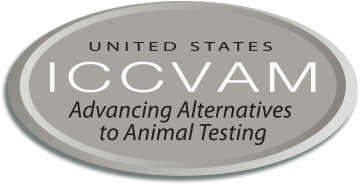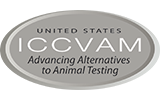Amendments to the Hazardous Materials Regulations to expand options for in vitro testing for classifying corrosives
DOT classifies substances to establish precautions that may need to be taken when materials are handled or transported. Two rulemaking activities during 2022 and 2023 brought DOT regulations into alignment with international regulations that enable reduction of animal use for this purpose. These resulted from ongoing collaborations with the United Nations to expand options for non-animal testing for classifying hazardous materials for transportation.
- The Final Rule for HM-215P (87 FR 44944) was published in July 2022. It incorporates the 2016 version of OECD Test No. 431, “In Vitro Skin Corrosion: Reconstructed Human Epidermis (RHE) Test Method.” This test method is used to assign a packing group to Class 8 (corrosive) materials under 49 CFR § 173.137. Since the RHE test method does not distinguish between packing groups II (“medium danger”) and III (“low danger”), DOT added language to allow corrosive materials classified using this method to be assigned to the more conservative packing group without further testing.
- A Notice of Proposed Rulemaking for HM-215Q (88 FR 34568) was published in May 2023. This Notice proposed incorporating a new in vitro test method, OECD Test No. 439, “In Vitro Skin Irritation: Reconstructed Human Epidermis Test Method,” to allow a material to be ruled into or out of Class 8. DOT also proposed revising 49 CFR 173.137 to allow corrosive materials to be assigned to the most conservative applicable packing group when tested using test methods that cannot distinguish between each packing group. As of early 2024, DOT is finishing the Final Rule that will incorporate these changes.



